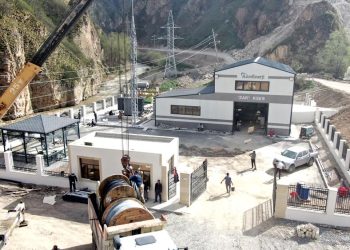China’s intake of LNG fell 1.1% in 2015, marking the first year-on-year decline since imports began in 2006, according to a report by the US Energy Information Administration.
Chinese LNG imports grew steadily from 0.1 Bcf/d in 2006 to 1.3 Bcf/d in 2010, and have more than doubled since then, EIA said in the report released last week.
Imports peaked in 2014 at 2.7 Bcf/d (20.7 million mt/year), making China the third-largest LNG importer in the world after Japan and South Korea.
In 2015, however, LNG imports declined 0.1 Bcf/d to 2.6 Bcf/d, reflecting in part a slowdown in the growth of the Chinese economy and lower prices of competing fuels, EIA said.
China has 13 LNG import terminals in operation with a combined capacity of 5.4 Bcf/d. Several more terminals, with a combined capacity of 3.4 Bcf/d, are under construction and scheduled to start up over 2016-2019.
But the startup of some terminals has been delayed due to a lack of downstream demand, EIA said, citing the Jieyang LNG terminal in Guangdong, which was completed last year but has not been connected to a provincial pipeline network to supply end-users.
The terminal’s customers are factories that can also run on LPG, which is currently being preferred as it is cheaper than LNG priced under long-term contracts.
In addition, many contracts to supply LNG to the new regasification terminals were signed when oil prices were above $100/b, making long-term LNG prices less competitive than both spot LNG and LPG.
Major Chinese oil and gas companies have been trying to postpone shipments of contracted LNG to the new terminals and instead buy lower-priced spot cargoes, EIA said.
But demand for natural gas, particularly in the power generation and transportation sectors, is expected to be stimulated by a recent price cut in China. In November, the Chinese government lowered the ceiling for citygate natural gas prices for non-residential sectors by around 28% or $2.95/MMBtu.
China’s LPG demand growth in 2016 is expected to slow to 8%-10% from 21% in 2015, as requirements from petrochemical plants and industries ease.
China’s apparent LPG demand — comprising domestic production and net imports — was estimated to be around 39.83 million mt in 2015, up from around 33.04 million mt in 2014, according to Platts calculations based on data from the General Administration of Customs and the National Bureau of Statistics.












